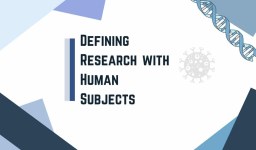Assessment Answers
| Question | Answer |
|---|---|
| What significant insight does Owen Warland gain at the end of “Artist of the Beautiful?” | The Transience of Physical Beauty and Creation: Owen’s butterfly, the epitome of his life’s work, is destroyed by the innocent yet thoughtless act of a child. This moment highlights the fragility and transience of physical beauty and artistic creation. Owen realizes that the material embodiment of his vision (the butterfly) is less important than the vision itself. Internalization of Beauty: The destruction of the butterfly signifies a shift from seeking external validation to recognizing the value of internal, personal fulfillment in artistic creation. Owen understands that true beauty and achievement lie in the act of creation and the fulfillment of his artistic vision, not necessarily in the physical artifact of that process. The real accomplishment is the spiritual and creative journey he undertook, not the object he created. Art as a Personal Quest: The story concludes with Owen appearing at peace, suggesting that he has found contentment in his artistic journey. He recognizes that the pursuit of the “beautiful” is a deeply personal endeavor, one that might not be fully understood or appreciated by others. This realization emphasizes the idea that artistic creation is often its own reward. The Spiritual Over the Material: Throughout the story, Owen’s quest can be seen as a spiritual journey. The destruction of the butterfly, and Owen’s subsequent reaction, underscore the idea that the essence of true art lies in the spiritual and emotional realms, beyond the grasp of the physical and material. |
| Chronos | Quality / Quantitative time. Time needed, but limited |
| Kairos | The appointed time. The moment of opportunity for the individual |
| What does Art do? | It provides the person a purpose Art is the purpose for Owen to live. |
| “He produced, as he spoke, what seemed a jewel box…” | Butterfly. Ideal + Nimesis Art is representational The rich down |
Why do you think Peter Hovenden is such an excruciating figure for Owen Warland? What traits does Hovenden possess that are most threatening to the artist?
Peter Hovenden in Nathaniel Hawthorne’s “The Artist of the Beautiful” represents a significant and excruciating figure for Owen Warland for several reasons, largely stemming from the traits and worldview that Hovenden embodies. These traits pose a direct threat to Owen’s artistic sensibilities and the values he holds dear.
- Practicality Over Imagination: Hovenden is characterized by his practicality and his belief in the tangible, material world. He values utility and function over beauty and art. This perspective is antithetical to Owen’s, who places supreme value on the aesthetic and the spiritual significance of creation.
Hovenden’s practical mindset dismisses the importance of the artist’s imaginative and creative pursuits, which is deeply discouraging for Owen. - Skepticism and Lack of Faith in Art: Hovenden’s skepticism about anything that does not have a practical application directly undermines the very essence of Owen’s life’s work. He fails to appreciate or even acknowledge the value of artistic endeavors, which is not only demoralizing but also represents a societal attitude that Owen must constantly struggle against.
- Materialistic Worldview: Hovenden’s materialistic worldview represents a larger societal attitude that undervalues or fails to comprehend the artist’s need to create and express beauty. This world view is in stark contrast to Owen’s spiritual and aesthetic pursuits and symbolizes a world that is often hostile or indifferent to artistic endeavors.
- Personal History: On a personal level, Hovenden is Owen’s former master, adding complexity to their relationship. His disapproval or lack of understanding carries the weight of a mentor’s judgment, making it more impactful and difficult for Owen to bear.
- Threat to Owen’s Artistic Integrity: Most importantly, Hovenden’s traits and attitudes threaten Owen’s artistic integrity and vision.
His constant questioning and doubt cast a shadow over Owen’s creative process, fostering an environment of negativity and skepticism that is antithetical to artistic creation and expression.
Peter Hovenden stands as a symbol of the practical, materialistic world that fails to recognize or value the spiritual and aesthetic aspirations of artists like Owen Warland.
His traits are not just personally challenging to Owen but also represent a broader societal challenge faced by artists who strive to transcend the material and achieve the sublime through their art.
What does Art do?
Here are some key functions of art:
- Expression of Inner Thoughts and Emotions: Art provides a medium through which artists can express their innermost thoughts, feelings, and perspectives. It serves as a channel for conveying ideas and emotions that might be difficult to articulate through words alone.
- Cultural Reflection and Influence: Art reflects different societies’ cultural values, beliefs, and identities. It can both mirror current societal norms and influence or challenge those norms, often acting as a catalyst for cultural change or preservation.
- Provoking Thought and Dialogue: Art often poses questions, challenges assumptions, and encourages critical thinking. It can stimulate intellectual discussions and provoke thought among its audiences, leading to new insights and perspectives.
- Aesthetic Enjoyment and Beauty: One of the primary functions of art is to create beauty and provide aesthetic pleasure. People often engage with art simply for the joy and emotional response it evokes through its beauty or emotional depth.
- Social and Political Commentary: Art can be a powerful social and political commentary tool. Artists often use their work to comment on social injustices, political issues, and other significant societal topics, influencing public opinion and sometimes even policy.
- Therapeutic and Healing Purposes: Art therapy is recognized as a tool for healing, allowing individuals to cope with trauma, mental health issues, and emotional challenges. Creating or engaging with art can be a therapeutic process that aids in mental and emotional well-being.
- Historical Documentation and Perspective: Art serves as a historical record, providing insight into life in different eras. It can offer perspectives on historical events and eras, capturing details that might not be recorded in traditional historical documents.
- Educational Tool: Art can be used as an educational tool, enhancing learning and understanding in various fields. It can make complex ideas more accessible and engaging, enhancing cognitive abilities like creativity and critical thinking.
- Creating Community and Shared Experiences: Art often brings people together, fostering a sense of community and shared experience. This can be through public art installations, community art projects, or simply through a shared appreciation of art forms.
- Spiritual and Religious Significance: Art plays a significant role in religious and spiritual rituals and expressions in many cultures. Religious art can be a medium for conveying theological beliefs, spiritual narratives, and divine imagery.




Leave a comment